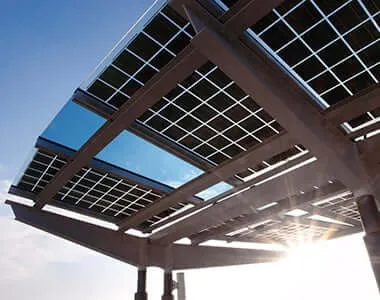solar panel efficiency over the years
The Evolution of Solar Panel Efficiency Over the Years
In recent decades, the quest for renewable energy sources has gained unprecedented urgency. Among these sources, solar energy stands out as one of the most promising due to its abundance and sustainability. However, the efficiency of solar panels—their ability to convert sunlight into usable electricity—has been a crucial factor that influences their viability. Over the years, significant advancements have been made in solar panel technology, leading to increased efficiency and wider adoption.
Solar panel efficiency has seen a remarkable evolution from the early days of photovoltaic technology. The first practical photovoltaic (PV) cell was developed in 1954 by Bell Labs, boasting an efficiency of just 6%. This early innovation laid the groundwork for the solar revolution. Over the next few decades, research and development pushed efficiencies higher, with various technologies entering the fray. The 1970s and 1980s saw increased investment in solar energy, driven by rising oil prices and growing environmental concerns. By the end of the 20th century, commercial solar panels achieved efficiencies of around 15%.
The major leap in solar panel efficiency can primarily be attributed to advancements in material science and engineering. Initially, most solar panels were made from crystalline silicon, known for its decent efficiency at a reasonable cost. However, thin-film technologies emerged as a viable alternative, utilizing materials like cadmium telluride and copper indium gallium selenide. These thin-film panels, while generally less efficient than their crystalline counterparts, offered advantages in terms of flexibility and lower production costs, attracting interest in various applications.
The most substantial breakthroughs in efficiency occurred in the last two decades. The introduction of multi-junction photovoltaic cells marked a significant milestone. These cells layer multiple semiconductor materials, allowing for the absorption of a broader spectrum of sunlight. Research teams have achieved efficiencies over 40% under concentrated sunlight conditions, although these systems are typically reserved for specialized applications. The integration of advanced techniques, such as passivated emitter rear contact (PERC) technology, has also contributed to efficiency improvements in conventional solar panels, with some commercial models now surpassing 22%.
solar panel efficiency over the years

Moreover, the emergence of bifacial solar panels, which can harness sunlight from both sides, has further optimized energy capture. These innovations are often coupled with tracking systems that allow panels to follow the sun’s path, thereby increasing overall energy yield. As a result of these technological advancements, the average efficiency of residential solar panels has steadily climbed, providing consumers with more energy generation per square foot.
In addition to technological innovations, manufacturing processes have also evolved to improve efficiency. Automation and precision engineering have led to more consistent quality in solar panels, reducing defects that can hinder performance. Furthermore, as the demand for renewable energy continues to surge, economies of scale have driven production costs down while enhancing the overall performance of solar technologies.
Beyond efficiency, modern solar panels have also become more durable and reliable. With improved materials and protective coatings, contemporary solar panels can withstand harsh weather conditions, thereby extending their lifespan and ensuring long-term energy productivity. This durability translates to a greater return on investment for consumers and businesses alike.
The benefits of improved solar panel efficiency extend beyond individual installations
. As global efforts intensify to combat climate change and transition to sustainable energy sources, enhanced solar technology plays a critical role in meeting energy demands. High-efficiency panels can facilitate the integration of solar power into the grid, driving down reliance on fossil fuels and reducing greenhouse gas emissions.In conclusion, the journey of solar panel efficiency over the years reflects a remarkable narrative of innovation and resilience. From humble beginnings with low efficiency rates to the advanced technologies that dominate the market today, the evolution of solar panels has paved the way for a cleaner, more sustainable energy future. As research continues to push the boundaries of efficiency even further, solar energy is poised to play an increasingly significant role in the global energy landscape—offering a beacon of hope in the fight against climate change and environmental degradation. The ongoing developments in solar technology not only illuminate our pathways toward sustainable energy but also inspire a collective commitment to preserving our planet for future generations.
-
String Solar Inverter: The High-Efficiency Solution for Smart Solar EnergyNewsJul.14,2025
-
Revolutionizing Rooftop Energy with the Power of the Micro Solar InverterNewsJul.14,2025
-
Power Independence with Smart Off Grid Solar Inverter SolutionsNewsJul.14,2025
-
On Grid Solar Inverter: Powering the Future with Smart Grid IntegrationNewsJul.14,2025
-
Monocrystalline Solar Panels: High-Efficiency Power for the Future of Clean EnergyNewsJul.14,2025
-
Bifacial Solar Panel: A Smarter Investment for Next-Generation Energy SystemsNewsJul.14,2025







